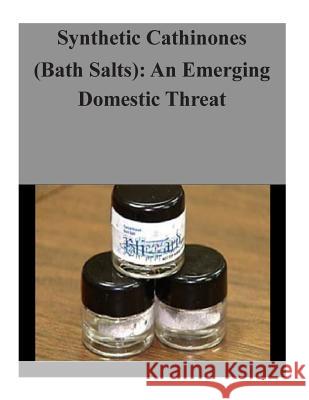Synthetic Cathinones (Bath Salts): An Emerging Domestic Threat » książka
Synthetic Cathinones (Bath Salts): An Emerging Domestic Threat
ISBN-13: 9781503231122 / Angielski / Miękka / 2014 / 24 str.
The National Drug Intelligence Center (NDIC) assesses with high confidence that the distribution and abuse of synthetic cathinones will increase in the United States in the near term, posing yet another challenge to U.S. law enforcement officials. Poison control centers and medical professionals around the country are increasingly reporting patients suffering adverse physical effects associated with abuse of these drugs, further compounding the problem. Available data and law enforcement reporting suggest increasing levels of synthetic cathinone availability and abuse, but such information is limited and precise levels are unknown. U.S. Customs and Border Protection (CBP) currently tracks seizures of synthetic cathinones at U.S. ports of entry (POEs), but many synthetic cathinone products are disguised or mislabeled to impede detection. Because common field test kits, drug-detecting canines, and routine urine drug screens do not detect synthetic cathinones, law enforcement officials are challenged in interdicting such drugs and prosecuting their manufacturers and distributors. Synthetic cathinones, typically marketed as "bath salts" and "plant food," are sold legally under various names (Ivory Wave, Blizzard, etc.) in most areas of the United States. The products are generally sold in retail establishments such as adult stores, independently owned convenience stores, gas stations, head shops, and skateboard shops. The products, as well as their raw chemical components, are also sold on many Internet sites, including popular Internet auction sites. Additionally, synthetic cathinones have been sold by independent dealers as ecstasya-in powdered form, in single-component tablets and capsules, and in tablets and capsules containing cathinones combined with MDMA (3,4-methylenedioxymethamphetamine) or other illicit controlled substances. Abusers typically ingest, inhale, inject, smoke, or snort (insufflate) the drugs to experience stimulant effects similar to those induced by amphetamine. Manufacturers and distributors of synthetic cathinone products evade U.S. Drug Enforcement Administration (DEA) regulation and enforcement because synthetic cathinones are not scheduled under the Federal Controlled Substances Act (CSA). However, possession and distribution of the synthetic cathinones may be prosecuted, albeit with greater difficulty, under the Federal Controlled Substance Analogue Enforcement Act of 1986 (as amended)b of the CSA. The availability and suitability of a prosecution under the analogue statute depends on the particular compound being trafficked and the facts of the case. Further, distributors deceptively market synthetic cathinone products as "not for human consumption" to evade U.S. Food and Drug Administration (FDA) scrutiny. Cathinone products that are introduced into interstate commerce and promoted as alternatives to illicit street drugs may be prosecutable under the Federal Food, Drug, and Cosmetic Act as unapproved new drugs and misbranded drugs. (See the offenses at 21 U.S.C. 331(a), (d) and penalties at 21 U.S.C. 333.)1 Additionally, members of the Congress have introduced legislation to nationally ban the sale of certain synthetic cathinones, c and, as of April 2011, all 50 states and the District of Columbia have introduced or announced plans to introduce legislation banning or restricting the distribution and possession of certain synthetic cathinones and cathinone derivatives. As synthetic cathinones become more regulated, abusers will likely use the Internet with greater frequency to purchase cathinone products, the raw chemicals used in their production, and products that contain cathinones not specifically prohibited by enacted legislation.
Zawartość książki może nie spełniać oczekiwań – reklamacje nie obejmują treści, która mogła nie być redakcyjnie ani merytorycznie opracowana.











